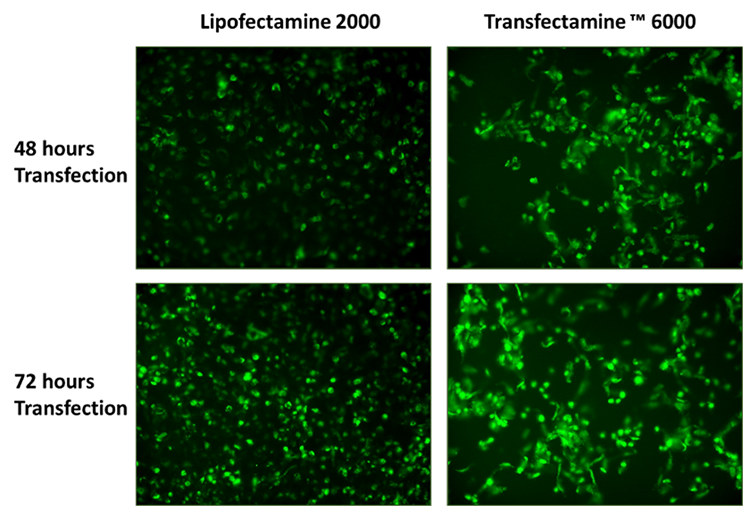Transfectamine™ 6000 CRISPR Transfection Reagent
Transfectamine™ 6000 CRISPR Transfection Reagent is a non-liposomal formula designed for optimal delivery and effectiveness of CRISPR/Cas9 components across a wide array of cell types. Engineered for targeted genome editing, this reagent demonstrates superior transfection efficiency, particularly in cell lines typically resistant to transfection. The versatility of Transfectamine™ 6000 CRISPR Transfection Reagent supports various CRISPR/Cas9 systems, including plasmids, ribonucleoproteins (RNPs), and mRNA. Its formulation has been optimized to minimize cytotoxicity while maintaining cell viability, ensuring more accurate and reliable experimental results. The straightforward protocol associated with our reagent reduces the need for extensive optimization, streamlining the workflow and conserving valuable time and resources. Transfectamine™ 6000 CRISPR Transfection Reagent is suitable for various applications, such as gene knockout and knock-in experiments, the generation of CRISPR-mediated gene-edited cell lines, functional genomics studies, and research in therapeutic gene editing.


| Catalog | Size | Price | Quantity |
|---|---|---|---|
| 60023 | 1 mL | Price | |
| 60024 | 5 mL | Price | |
| 60028 | 50 uL | Price |
Physical properties
| Solvent | Water |
Storage, safety and handling
| H-phrase | H303, H313, H333 |
| Hazard symbol | XN |
| Intended use | Research Use Only (RUO) |
| R-phrase | R20, R21, R22 |
| Storage | Freeze (< -15 °C); Minimize light exposure |
| UNSPSC | 12171501 |
Contact us
| Telephone | |
| Fax | |
| sales@aatbio.com | |
| International | See distributors |
| Bulk request | Inquire |
| Custom size | Inquire |
| Technical Support | Contact us |
| Request quotation | Request |
| Purchase order | Send to sales@aatbio.com |
| Shipping | Standard overnight for United States, inquire for international |
Page updated on January 5, 2026
